452 Search Results for visual supports
March 5, 2013
by Robin Parker -

Strategy of the Month Beyond Requesting: Thoughts on Teaching Information Transfer Beyond Requesting: PrAACtical Scripts to Teach Conversations Beyond Requesting: Thoughts on Teaching Interrogatives Beyond Requesting: Let’s Chat with Peers PrAACtical Thinking Language Experience Surveys: 8 Fun Ideas 14 Valentine’s Day Activities: Love, Literacy, & Learning Flip Book Love Angelman Awareness Day It Gives Me the Feeling of Love Inclusion & Jewish Disability Awareness Month What’s New? VIVIVOCA Math, Science, and AAC The ‘Real’ Pre-requisites to AAC Device Use The Joy of Reading: World Book Day PrAACtical Thoughts About Graphic Organizers AACtual Therapy & How I Do It Teaching the Use of Social Phrases and Comments Fun & Functional Vocabulary Supporting Teachers of Students with AAC Needs Essential Tricks for Supporting AAC in Schools, Part 1 Video of the Week Ted Carr on Challenging Behavior in ASD A Language Lost PrAACtical Puppet Power The Importance of Using Visual Supports Conference... [Read More...]
February 28, 2013
by Carole Zangari -
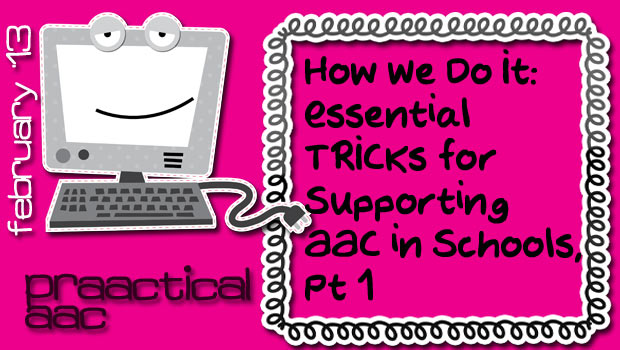
When I first moved to Florida almost 20 years ago, there was a plethora of AAC trainings for special educators, school-based SLPs, and other related service personnel. The AAC professionals in the Orange County area could always be counted on for top-notch information and engaging presentations that kept all of us learning and growing. Florida since moved into a different model for professional development in AT and I am still mourning the loss of access to this fabulous team. We are so lucky that they agreed to share some of their ‘Go – To’ resources with us in this post. The OCPS AT Team has 5 TRICKS to share with us and all of them are very prAACtical. In this post, they share the first two (stay tuned for the other 3 TRICKS in a future post). Get ready to check out their prAACtical ideas and download some of their... [Read More...]
February 27, 2013
by Carole Zangari -
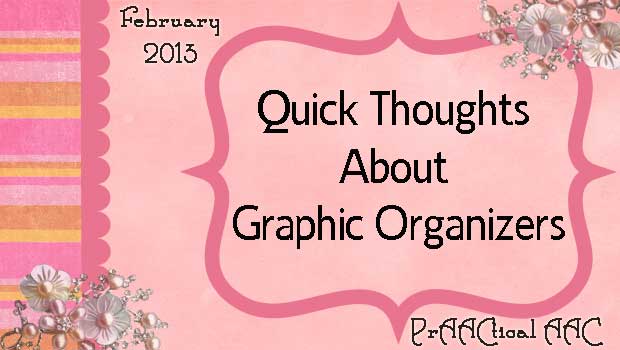
With our love of visually-based communication, it should come as no surprise that we were happy to come across this blog post by Ryan Knobloch. For starters, it’s always gratifying to see examples of how visual supports work for all types of learners in all types of situations. Making language visible is a good thing for all of us. Graphic organizers are one way to add clarity in AAC therapy sessions. It got us to thinking about how to make them accessible to learners with AAC needs by scanning them and making them into forms, for example. We also started reflecting on what goals could be supported through the use of this strategy. Semantic development and building stronger narrative skills immediately came to mind. Do you use graphic organizers in your work with AAC learners? We’d love to hear about it.
February 23, 2013
by Robin Parker -
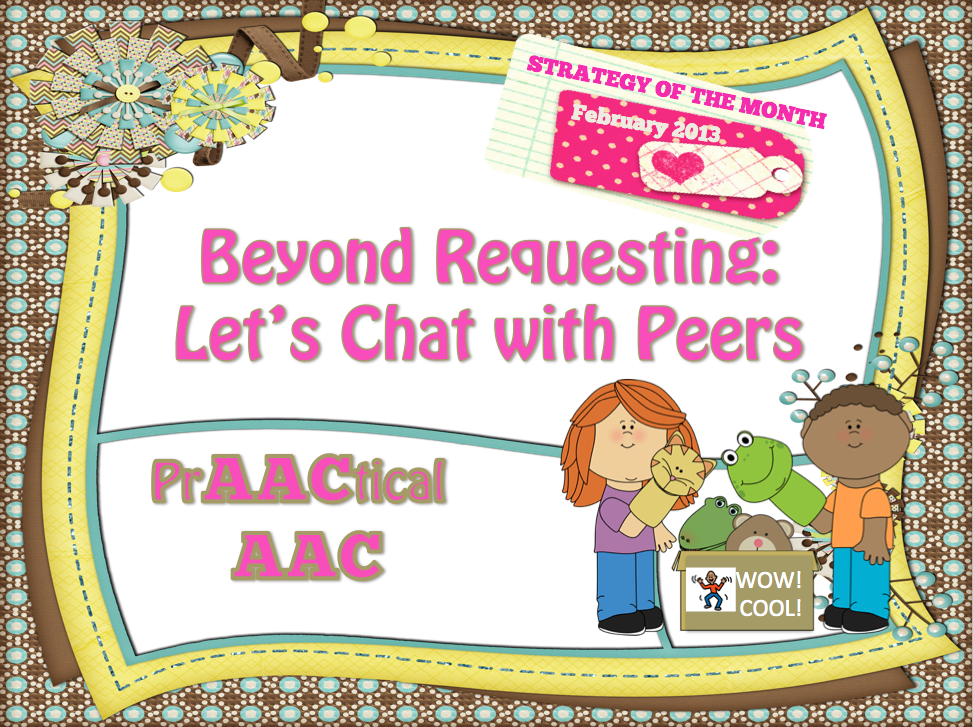
As we wrap up the February Strategy of the Month, we need to add strategies for helping AAC users talk/chat with peers. For some learners, it is more about providing access and opportunity while for others, it is more about providing a platform for the social awareness and exchange. However, for all learners who need assistance in ‘chatting’, there are many goals and strategies that will help. Setting the Foundation for Social Exchanges with Peers Provide frequent opportunities for peers to communicate with each other- Build in many opportunities within all (or almost all) activities for generic small talk, gossiping, & chatting. Create activities that have’ built in’ communication with peers- develop activities that require communication with peers to make the activity work. Instead of having all communication directed at the adults/facilitators in the room, have the learners talk to peers to take steps in the activity. Set up... [Read More...]
February 19, 2013
by Robin Parker -
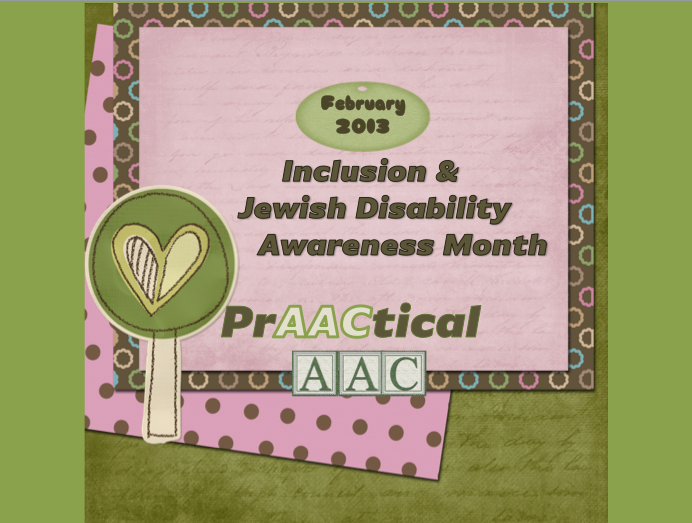
February 2013 is the 5th annual Jewish Disability Awareness Month. In honor of inclusion into a Jewish education and life we wanted to share some resources that will help support full participation for everyone. Keep in mind though, the idea of inclusion transcends a specific religion and all of the resources here can customized and used to welcome ALL families. A Virtual Book Club Webinar: Now I See The Moon- A Mother, A Son, A Miracle **Definitely Worth Watching (great story and learn how inclusive programming was created where there was none)** Jewish Disability Awareness Facebook Page Gateway Access to Jewish Education Visual Supports for Passover, Shabbat, High Holidays, Chanukah, & Purim. Jewish Disability Awareness Month Guide Children’s Book’s About Disability
February 16, 2013
by Carole Zangari -
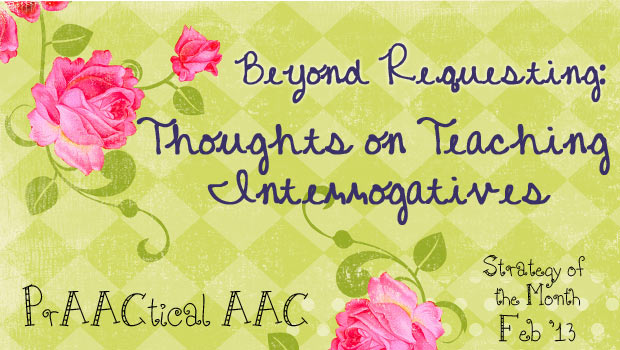
. A few weeks ago we talked about AAC intervention to teach someone how to convey information that others want or need. Giving instructions, answering comprehension questions, and retelling a story all fit into the Light’s category of ‘information transfer.’ Communicating in order to give information is only part of that story. Today, we complete the story by talking about getting information from others. Not all questions are about getting information, of course. We also ask questions for other reasons, like getting something we want or need (e.g., “May I have a drink, please?”) and socializing with friends/family (e.g., “How was your weekend?” “What did you do for your birthday?”). But in this post, we focus on interrogatives that serve the purpose of getting needed information from a communication partner. Many times when we think of interrogatives in language therapy, the focus is on answering them accurately and appropriately. The skill... [Read More...]
February 9, 2013
by Robin Parker -
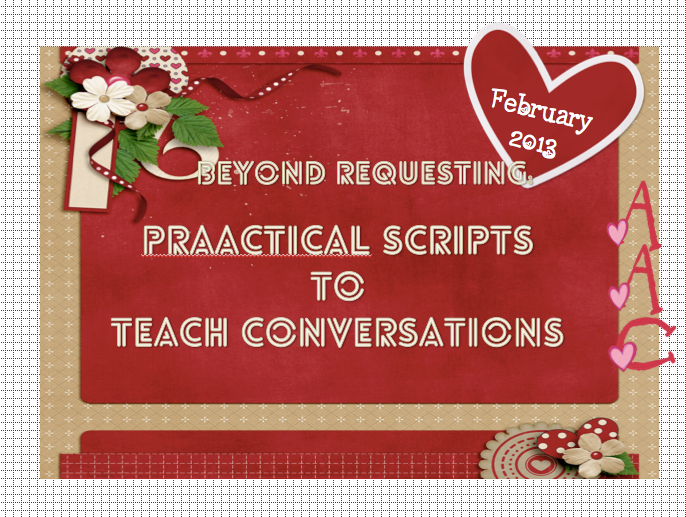
This month’s communication and language strategy goes beyond requesting into conversation. Beginning (and more advanced) communicators can be introduced to conversations through scripts. Scripts for teaching the art of conversation can help give the language to initiate, maintain, extend, and terminate social and conversational exchanges. Scripts can be used to talk about special interests, to participate in activities, and much more. When we teach scripts in a way a learner ‘learns’, the script shows the guidelines, boundaries, and organization of conversations. The communication and language goal is conversation. The strategy to teach conversation is scripts. Scripts are not that foreign to the conversational situation. We all may use scripts at times. Think about your ‘small talk’ scripts or your scripts that help you in unfamiliar or difficult conversations. If learners have difficulty knowing how to participate in conversation, a script can capitalize on strengths like memory and doing well with... [Read More...]
February 1, 2013
by Carole Zangari -
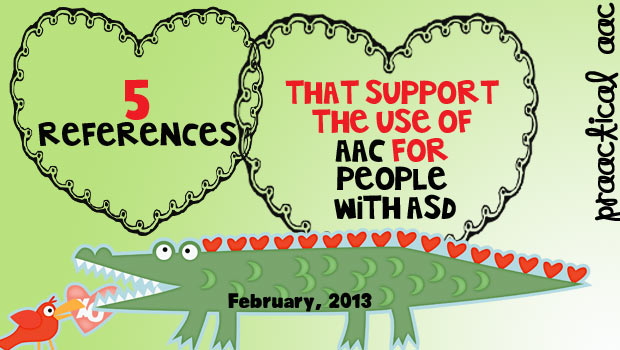
We occasionally get asked to provide empirical supports for some of the AAC tools and strategies used in our clinical work and teaching. Here are five references that we wanted to pass along. Ganz, J.B., Earles-Vollrath, T.L., Heath, A.K., Parker, R.I., Rispoli, M.J., & Duran, J.B. (2012). A meta-analysis of single case research studies on aided augmentative and alternative communication systems with individuals with autism spectrum disorders. Journal of Autism and Developmental Disorders, 42,1, 60-74. Systematic review of 24 single subject experimental design (SSED) studies investigated the impact of AAC interventions and concluded that aided AAC interventions had positive effects on communication and behavior skills. Although all picture-based AAC systems were effective, learners did best with SGDs or PECs. Checkley, R., Reidy, L., Chantler, S. Hodge, N., & Holmes, K. (2012). “Black white zebra orange orange”: How children with autism make use of computer-based voice output communication aids in their language... [Read More...]
January 31, 2013
by Carole Zangari -
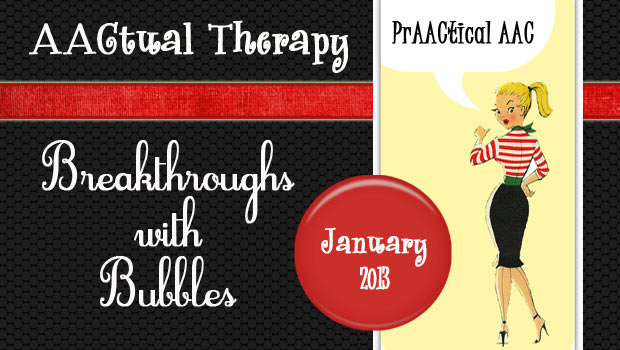
We couldn’t be happier that one of our first AACtual Therapists is Tanna Neufeld, a south Floridian on loan to the Pacific Northwest. Tanna was with us as a graduate student many years ago, and went on to build a fantastic reputation in our community for her excellent clinical skills. It was South Florida’s loss when she left last year and moved across the continent. (I know at least a few people scheming of ways to get her back.) Tanna is now working at the Children’s Therapy Center in Seattle. Tanna blogs at SNEAK Outside the Box and My Blind Side. You can read more about her at the end of this post, in which Tanna talks about using bubbles in her AAC therapy sessions. AAC Breakthroughs with Bubbles! When I first started using core vocabulary boards with my kids, I didn’t really know where to start. It was really... [Read More...]
January 29, 2013
by Robin Parker -
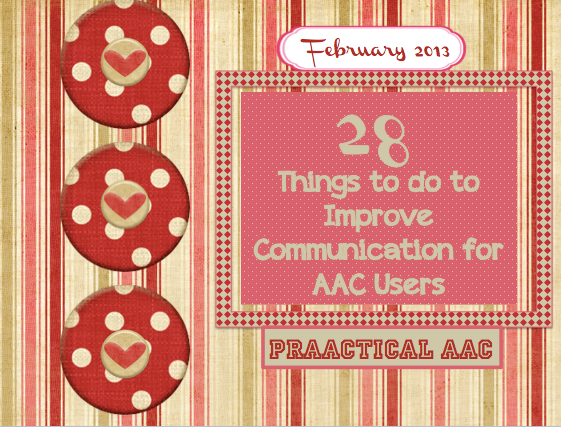
It’s almost February and and we were thinking about ways to encourage communication in a fun and meaningful way for the whole month. The best way we know is to build a visual language environment by providing lots of AAC modeling (Aided Language Input-ALI) and by using lots of visual supports. Here are some ideas to expand opportunities and/or to get started. We would love to know what works, what doesn’t, and any other ways you build visual language into everyday experiences. Use Aided Language Input (ALI) to say ‘I Love You’ . Make it part of a routine Offer learners a book choice board/choice book when deciding what book to read in speech-language therapy/classroom/home Use Aided Language Input (ALI) to tell how you feel when something is hard or difficult for you Use a ‘stop sign’ symbol to indicate an off limit area Use Aided Language Input (ALI) to... [Read More...]









